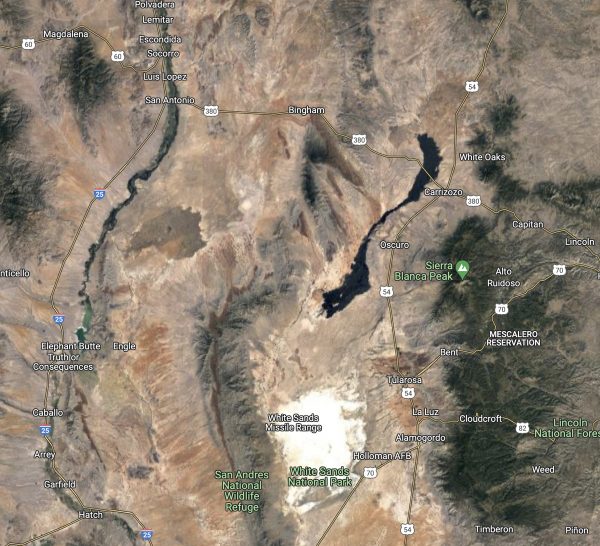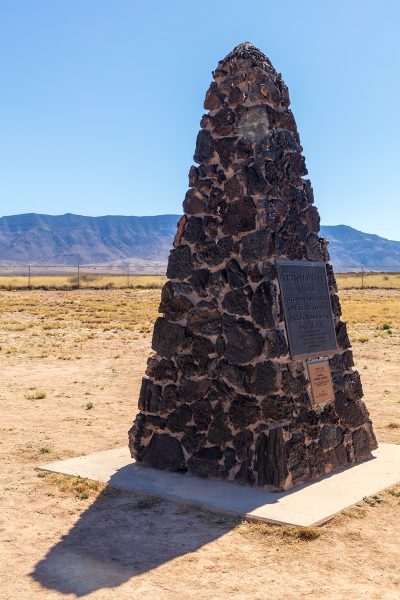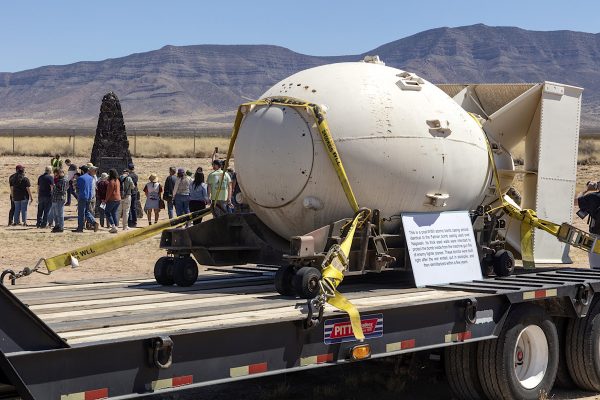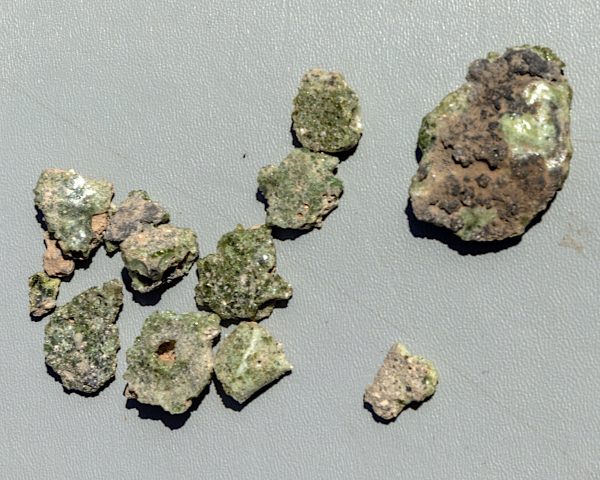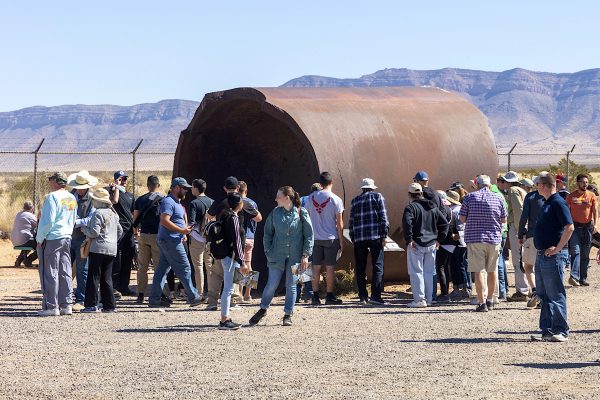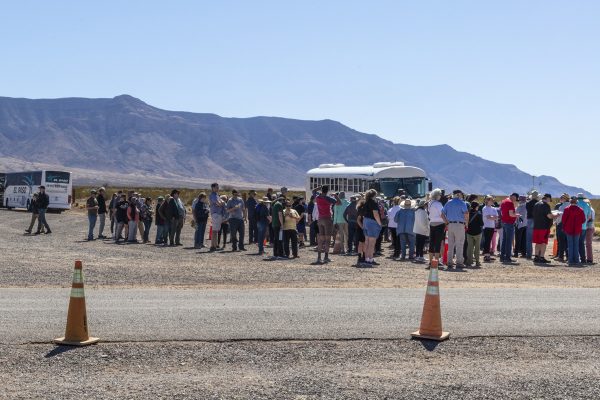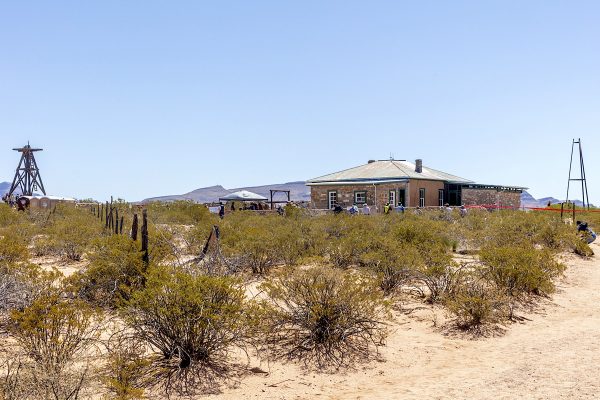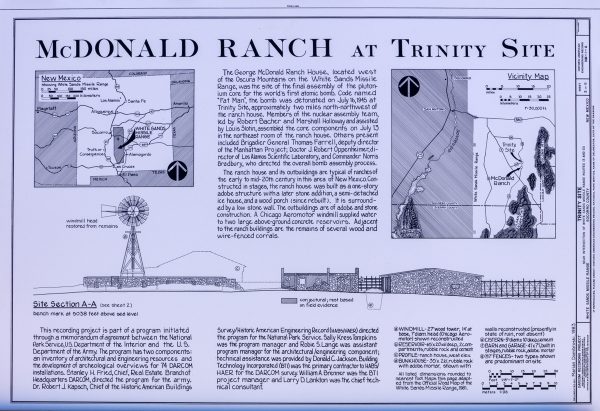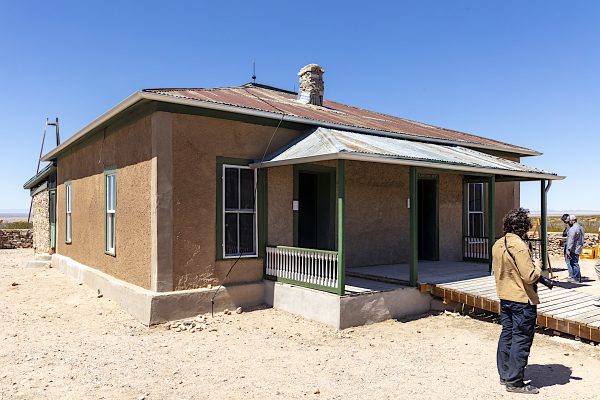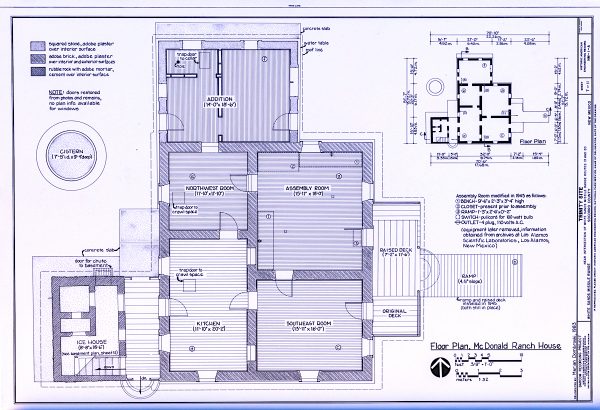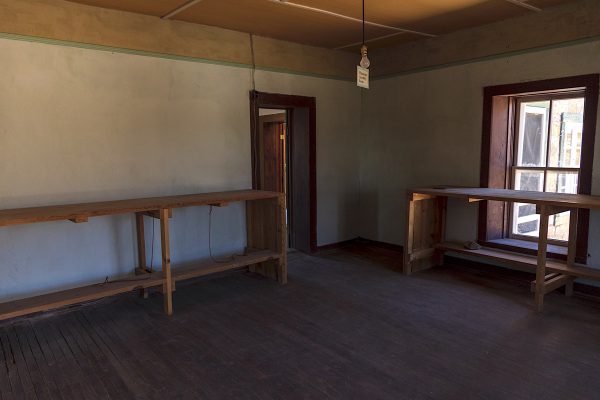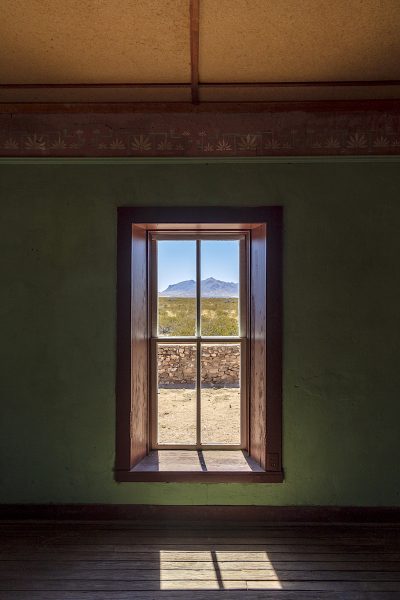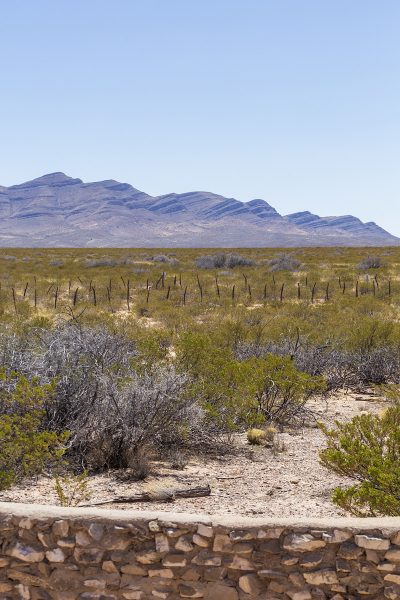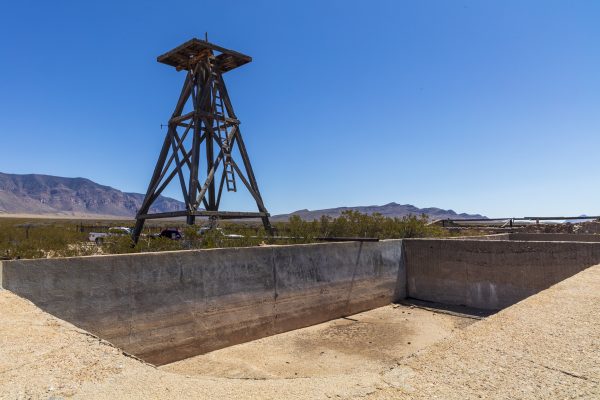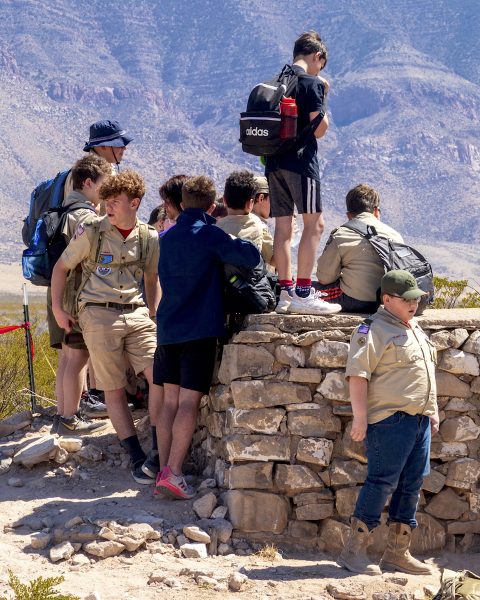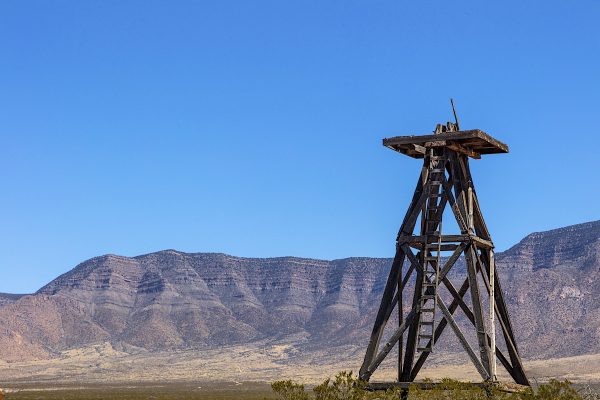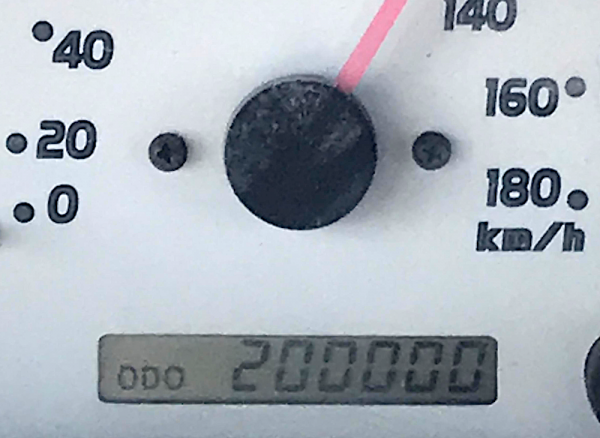Day Trip: Trinity Site, NM
by Bruce • April 4, 2022 • Roadies • 0 Comments
Last Sunday, the Trinity Site in White Sands Missile Range had one of its two semi-annual open houses, and I had a desire to visit it for some time, so I left in the morning to spend a few hours there. Not certain what I would experience there, once I got to there, I was glad I had come.
The Trinity Site is southeast of Socorro, New Mexico, in an isolated area of the White Sands Missile Range, and once I was east of the little town of San Antonia and then past the San Andres mountain range, I came into a surprisingly long swath of flat land.
Broad, empty, and remote, this New Mexican plain sitting between the San Andres Mountains to the west and the Oscura Mountains to the east persuaded the Manhattan Project scientists it was a suitable area for munitons testing, and was selected as home to the Trinity site.
The plain, a northern finger of the giant Tularosa Basin in central southern New Mexico, exemplifies the barrenness of the basin’s desert.
Nearly three and a half centuries ago, the Spanish entering New Mexico for the first time called crossing the Tularosa Basin the Jornada del Muerto, or “Journey of the Dead Man”, because of its vast lack of water, grazing vegetation, and kindling available for explorers traveling through it.
Arriving at the government base’s north gate a little after 10 AM, I was surprised to slow into a line of vehicles awaiting access to range- but I shouldn’t have been. I mean, the place is open for public visits twice a year!
Once on the range, the drive to the Ground Zero parking lot was another 15 minutes or so. And once I arrived at the lot, again, I should not have been surprised to see it full as well.
Once parked, I made for an information booth near the access walk to the Ground Zero area. The walk in to Ground Zero was not long, and once you were there, there were a number of objects to share your attention.
A view north from near the info booth towards Ground Zero.
A view south from Ground Zero back towards the lot.
The Ground Zero area is a fenced-in circle that roughly covers much of the blast area from the detonation of the bomb. Within this circle is an obelisk that identifies the actual ground zero location of where the tower holding the bomb had sat. Near the circle entrance, several volunteers stood by a table answering Trinity site questions. A series of historical photos on the north wall explained some about the area and the activities of the scientists from the Trinity program days.
The commemorative obelisk.
A bomb casing like that which carried the “Fat Boy” bomb in Japan was also on display on a flat bed trailer.
Also by the circle entrance, a table staffed by several people showed trinitite nuggets and vintage radiation detection equipment to visitors. Trinitite nuggets formed when quartz sand beneath the bomb was vaporized in the blast and melted into a green glass.
Back by the information booth and the parking lot, the remains of Jumbo, a giant 200-ton CO2-cartridge-looking container intended to catch plutonium from Gadget (the bomb) if the atomic assembly failed to detonate, is inspected by visitors.
Jumbo survived the atomic blast, but in effort to dispose of it, was also dinged by 8 500-pound bombs, which essentially took its ends off.
From the parking lot area, visitors could also hop on a bus to ride two miles over to the McDonald Ranch House, and see the building in which the bomb components were assembled for three days before its July 16, 1945, detonation.
The McDonald Ranch House was built by a German settler in 1913, and then purchased by the McDonalds family in the 1930’s. The government came in in 1942 and essentially took the land as part of their acquisition of a large chunk of the area for the Alamogordo Bombing and Gunnery Range.
The east exterior of the house.
The house floor plan.
I really enjoyed getting to walk through this structure and reflecting on what life must have been like here in 1945.
How hot this house must have been, to some extent.
And what giants of science at the time must have walked between the walls I was now in.
A view of the northwest room in which the bomb components were assembled.
A view south of Little Burro Mountain out the window from the southeast room.
The McDonald Ranch House was just two miles from Ground Zero when the bomb was detonated, and other than losing its windows, it survived the blast well.
It remained empty for years after, until in 1965, it was made a National Historic Landmark, and in 1966, it was added to the National Register of Historic Places.
The exposed fault patterns on the Oscura Mountains to the southeast of the ranch.
One of the two water reservoir compartments that were filled by a windmill pump. The drawn water was heavily alkaline and was unusable for drinking. The functioning system provided Manhattan Project scientists working at the base camp and here at the ranch house a nice swimming pool during sweltering summer desert days.
Scouts enjoying their adventure.
Like the scouts, I enjoyed my time visiting the location, and learning about the Trinity Site, and the events that surrounded the development and detonation of the first atomic bomb. Moreover, though, the trip also reminded me that a frightening thing had happened here, in this remote New Mexico desert, that awoke new fears in the hearts of modern men and women about our ability to destroy ourselves.
The water pump windmill in front of the Oscura Mountains to the east.
The day for a Trinity Site visitor is short. The attraction was closing at 2:30, which meant you were out of White Sands Missile Range by 3 PM at the latest.
For me, as I set out for Socorro, I knew I was looking forward to a good lunch, and I found a small Mexican restaurant near the south edge of town and enjoyed a great enchilada meal. And then, as I moved on towards Albuquerque, I watched my truck’s odometer, knowing that a certain milestone would happen on this drive home.
And at 4:04 PM, on I-25 right west of South Belen, it did.
I enjoyed my day trip out to the Trinity Site.

